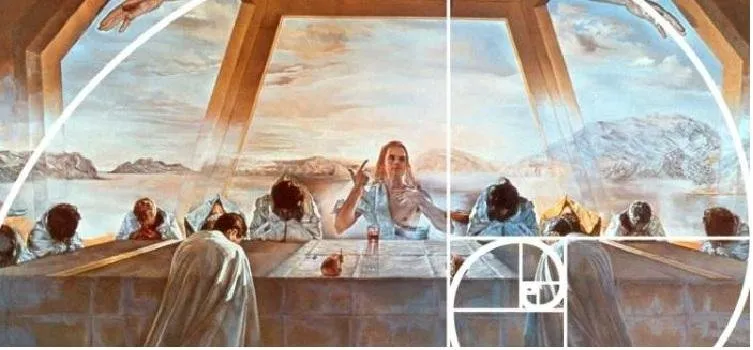
We should begin with a math of enchantment first. Take any two numbers and entirety them together. Include the second digit held with the entirety found. Presently continue adding each aggregate to the past number. Hence, separating the twentieth number by nineteenth number out of the twentieth number and get the offer of 1.608. Despite beginning any number, the outcome will be 1.608. For instance, consider 5 and 2 numbers.
5 + 2 = 7; 2 + 7 = 9; 7 + 9 = 16; 9 + 16 = 25; ........................
In this manner, the numbers 19 and 20 are accessible in the request of 13,153 and 212282 individually. Separation 21,282 by 13,153 and partitions to 1.608. This number is called brilliant equation. This is in truth a witch number. The brilliant proportion or the brilliant proportion among the quantity of huge numbers in arithmetic. To be comprehended, it is a corresponding sum. Its esteem is 1.6180 ... furthermore, is communicated by the Greek letter φ (fi). This is an unreasonable number. That is, it can not be communicated as a small amount of two entire numbers. A typical practice to distribute φ is-
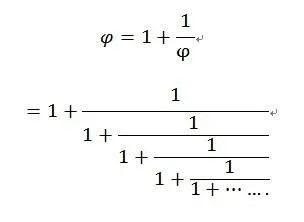
For reasons unknown, it isn't conceivable to distribute φ in a typical portion. This is a progressing procedure. Another vital number of science is gotten (π), however, it tends to be precisely communicated as 22/7 portion and in addition a few digits. Consequently, φ is known as the most strange number of arithmetic.
The letter φ (f) is gotten from the initials of the Greek stone carver fidias. It is said that Feidius (480-430 BC) depended on the brilliant proportions outlined by Ethheni Perthan. From that point forward the style of communicating the brilliant proportion to φ has been presented. Brilliant Rashio's Golden Section, Golden Mean, Golden Number, Devine Proportion, Devine Section, Golden Proportion, and so forth are named after different names. . φ is thought to have been known to antiquated Egyptians. Around 2560 BC, the utilization of brilliant beams of Egypt-Pyramid in old Egypt was taken note. Euclide Elements additionally had a geometrical guarantee like the brilliant proportion. In 1509, the number turned out to be more comfortable with the distribution of the book "De divina proportion" composed by Luca Pacioli, father of Italian mathematician and bookkeeping. Geometric delineations of the book were given by Renaissance acclaim Men Leonardo da Vinci It is a solid confirmation of the way that Vinchi is exceptionally outstanding with a number. Leonardo de Vinci (1452-1519) utilized the brilliant proportion in a considerable lot of his works. Among them, Vitruvian Man, The Last Supper and Mona Lisa are especially outstanding. The Golden Rhesus is additionally utilized in the renowned works of art of Michelangelo's 'The Creation of Adam', Rafael's 'The School of Athens', 'Vote of Venus', 'The Sacred of the Last Supper' of Battechilli, and Salvador Dalí.
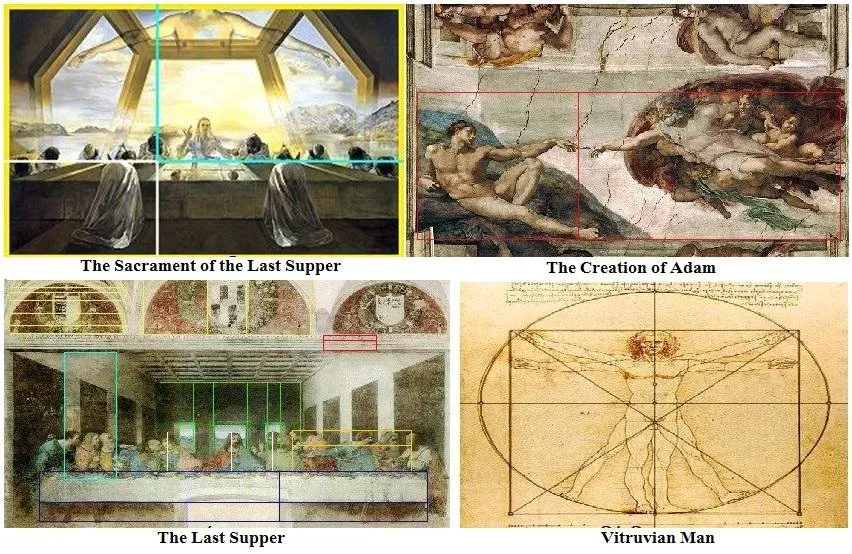
For reasons unknown, it isn't conceivable to distribute φ in a typical part. This is a continuous procedure. Another critical number of arithmetic is gotten (π), however, it tends to be precisely communicated as 22/7 portion and in addition a few digits. Therefore φ is known as the most counter-intuitive number of arithmetic.
Geometrical arrangements have an alternate stunner in part this proportion. Hence, the utilization of brilliant beams in various sorts of plans and painting on the planet today is additionally recognizable. As per the Golden Ratio, the geometric figure of the triangle, quadrangle, and so on can be drawn. A quadrilateral can be attracted such a path, to the point that the length and broadness are in φ: 1 proportion If the littler quadriceps are cut into φ proportion from this quadrilateral, at that point the littler quadrangular arms can be found in the brilliant proportion with one another. In the central triangle, two equivalent arms are in the φ: 1 proportion of land. Aside from it, it is separated between the points of the land and it isolates the contrary arm into φ: 1 proportion.
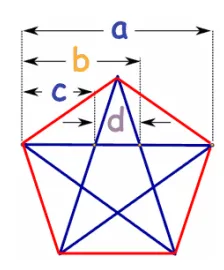
A unique geometric structure of a fair Pentagon or Pentagon Golden Rice. The fair pentagon is a limited zone with five arms, each arm is equivalent. It has five top points. Each best delivers the equivalent 108-degree edge and draws a five-pointed star utilizing the edges. The star that is painted is called Pentagram. Notice that a Pentagon is framed between Pentagram.
In the event that the length of the Pentagon's arm is 1 unit, the length of the stars is φ That is, each arm of the Pentagon has a brilliant ear with each side of Pentagram. There are 5 triangles in a single Pentagram that have ignored one another. The figure has added up to triangle 35 and add up to quadrilateral 21. Where is the claim to fame of Pentagram? Evidently, the image may appear to be a general geometric structure. Be that as it may, on the off chance that you take each bit of the image and measure it, at that point each Pentagram can be found in the brilliant area. The brilliant triangle of the first triangle Apart from this, each line has a part line with one another in the brilliant proportion. In the image  .
.
Pentagram is one of the world's most conspicuous images. Different employments of Pentagram are seen in the way of life of various nations. The utilization of Pentagram is seen in different old religious customs, including enchantment and mystery association. Pentagram has been utilized in excess of 60 national banners.
There is likewise the Golden Risho with the Fibonacci style. This area of 0, 1, 1, 2, 3, 5, 8, 13, ................ is known as the Fibonacci area. Here's the whole of the two numbers just before the number is the equivalent. For instance, 1 + 1 = 2, 2 + 1 = 3, 3 + 2 = 5, 5 + 3 = 8, 8 + 5 = 13 and so on. The Fibonacci segment was found in Leonardo of Pissar's Libra Abysi, composed on the counting strategy distributed in 1202. Leonardo of Pisa later wound up known as Fibonacci, and as per his name, the area was named after the Fibonacci segment. In the book, he utilized this pattern to take care of the issue of rabbit rearing. Be that as it may, Fibonacci isn't viewed as the fundamental work of Fibonacci. Along these lines, the notice of this area has been found in Indian math considerably prior. It is trusted that Indians found this area from Arabs. At a certain point, there was a cozy connection between the Fibonacci area and the brilliant proportion. The primary note was seen by German mathematician Simon Jacob, in 1564. Here one thing is observable that partitioning various Fibonacci groupings by its past number, the outcomes found are progressively moving towards brilliant beams. Eg - 8/5 = 1.6; 13/8 = 1.625; 55/34 = 1.61764; ............ ..
Fibonacci can be found in an assortment of creatures and plants. Since there is a cozy connection between this area and the brilliant beams, nature can be called brilliant beams. There is a propensity to pursue this pattern in blossoms, organic products, tree leaves and branches, seeds and leaves, revolution corn, fowls, human body, music, creepy crawlies, heavenly bodies and even winding systems. Nature does anyway consent to numerical code? We don't have the foggiest idea about the appropriate response. Be that as it may, this sort of nature demonstrates a great blend of math with nature. The Fibonacci Quarterly Journal has been distributed since 1963 because of such varieties of Fibonacchi arrangement. Fibonacci and related scientific issues are the points of this present diary's distribution.
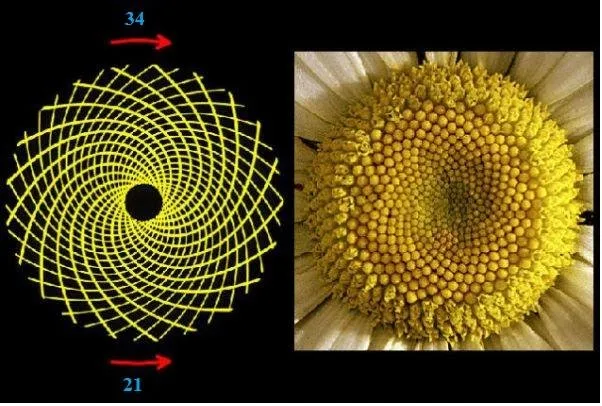
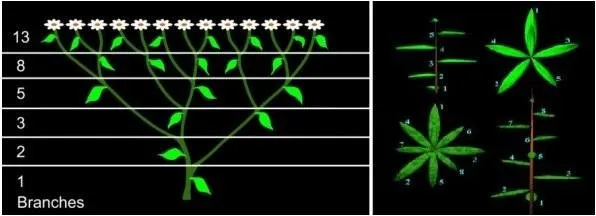
The utilization of φ in the plan of Perthan has involved an uncommon place ever of. With the tallness of the width of the Perth, the stature of the columns starting from the earliest stage since been at the best separation with φ proportion. Besides, the entire building can be envisioned to be a brilliant rect-point. Greek engineer Fidias outlined the example of perthan with regards to the brilliant proportion.
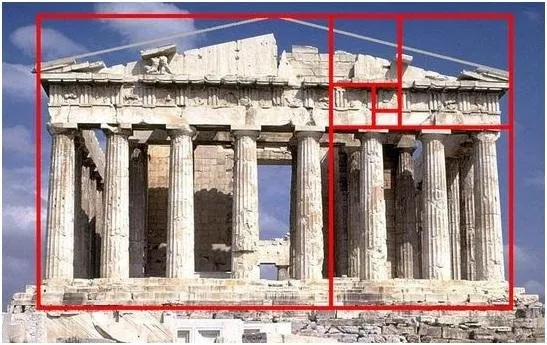
Egypt's Pyramid is another great case of the utilization of brilliant proportion in engineering. The development of the pyramid is evaluated to be 2570 BC. It is astounding to utilize the brilliant beams in an antiquated engineering of old occasions. In any case, specialists are uncertain about whether they really utilized it in a natural way. The Egyptians utilized a separation from the palm to the tip of the center finger, or, in other words, cubit. This separation was equivalent to 52.25 centimeters. Giza's Great Pyramid has a tallness of 356 cubits, from the floor of the pyramid directly to the best point, 280 cubits in stature and one arm remove from square floor focus are 220 cubits. It has been discovered that the corresponding figures of numbers are in various types of brilliant beams.
c/a = 356/20 = 1.618 = φ and b/a = 280/22 = 1.272 = √φ
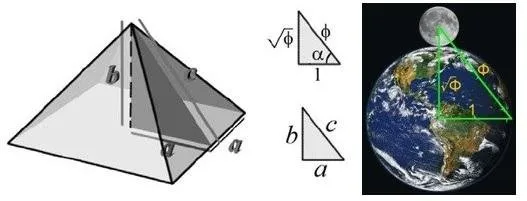
The upper right calculated triangle is found by applying the hypothesis in Pythagoras, φ2 = φ + 1. Here φ, the vertical √φ and the ground 1 unit. A comparable relationship can be found in extent to the associated states of the Earth and the Moon (see picture). This relationship of brilliant equation, its class, and single arm triangular triangle is another special element of φ.
Brilliant Rashio is known as the best number of science. The number is likewise now and then called the eminent number since it is more accessible in nature. We have seen its utilization in nature and craftsmanship. As a matter of fact, this number does not end with significance. That is the reason cosmologist and mathematician Johannes Kepler said that geometry has two exceptionally significant assets, one with Pythagorean hypothesis and the other is the brilliant proportion. We can contrast the first with the gold store and the second with the valuable diamond.
Source>>
The Glorious Golden Ratio – Alfred S. Posamentier, Ingmar Lehmann
The Golden Ratio: The Story of Phi, the World’s Most Astonishing Number- Mario Livio
The Golden Section: Nature’s Greatest Secret- Scott Olsen
The Golden Ratio: And Other Mathematical Patterns Inspired by Nature and Art- Steve Richards